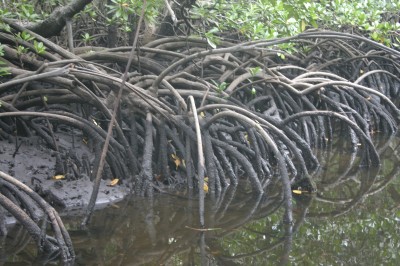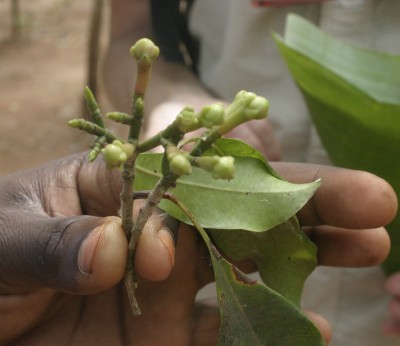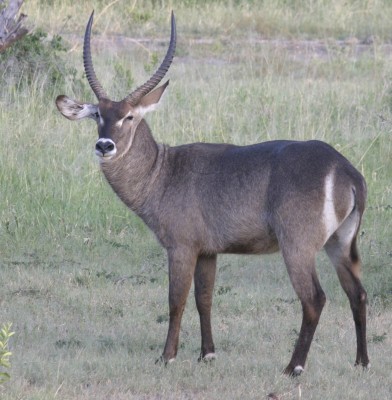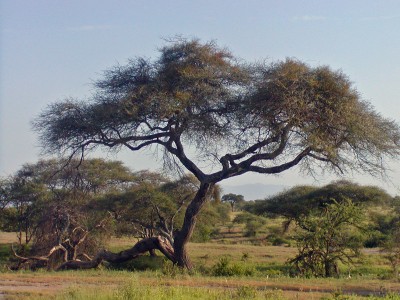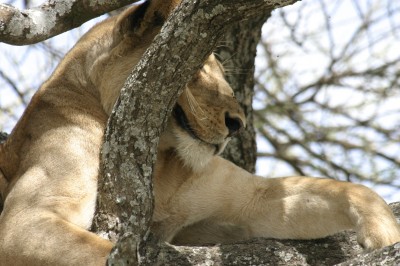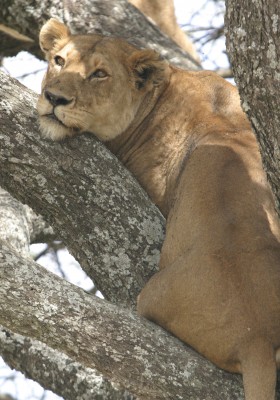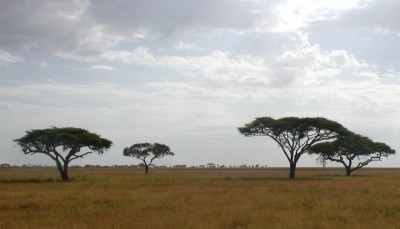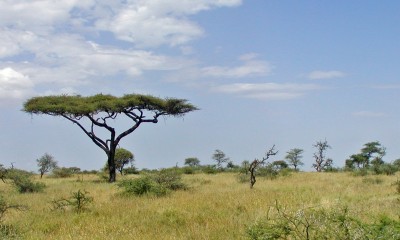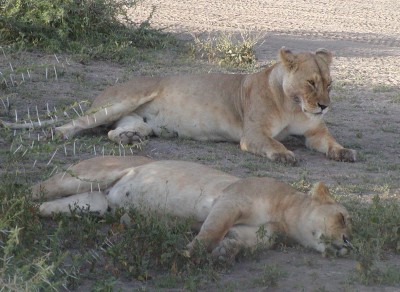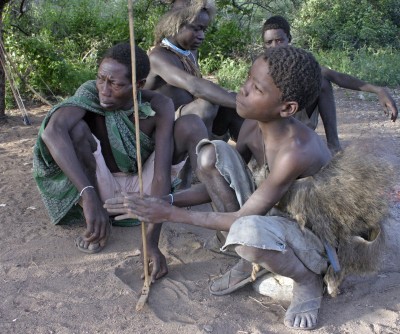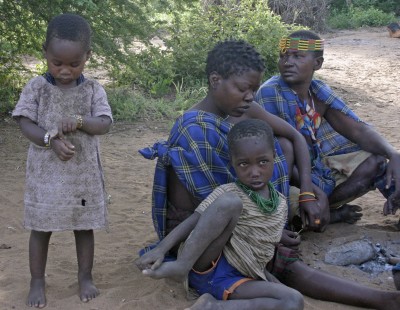The morning is still cool and fragrant as we walk by bushes and acacia trees towards a small plume of smoke. Suddenly, it is as though we have stepped 10,000 years back in time.
Six men and boys, some of whom are wearing baboon skins, sit around a small campfire, in the shade of a large fig tree. A few metres away sit two groups of women and children and a smaller group of men. We have come to the camp of a group of about 20 Hadzabe people (also known as Hadza). They belong to a nomadic tribe of about 1000 people that still live as hunter-gatherers in the area of Lake Eyasi south of Serengeti and Ngorongoro.
We shake hands and speak a word of greeting (our local guide has taught us the correct word to use) to each individual in the group. Luckily for us, the word of greeting is not one of the words that uses the click sound that is an integral ingredient in the Hadza language.
The elder works on a voluminous pipe to get it going heartily, inhales a huge amount of smoke and coughs so intensely I fear for his health. The cough, though, is apparently the appropriate and desired response to what we later discover is marijuana.
The Hadzabe men hunt kudu, impala, warthog, baboons, small mammals, and birds using a bow and arrow. For large game they use poisoned arrows. They make their own bows and arrows and poison, but trade honey, meat and skins with the neighbouring Datoga tribe to obtain metal arrowheads, rubber tire sandals, a few clothes – and marijuana.
Being a good hunter is essential for survival – and for finding a mate. A man must kill four baboons before he is eligible for the partner game. The boy in our group, who might be about 11 years old, has already killed his first baboon and proudly wears the skin as a shirt. The women gather tubers and fruit.
The Hadzabe sleep under the shade and shelter of an acacia tree or in the hollow of a baobab tree. They also construct a very simple hut made of loosely interwoven branches and twigs. The hut looks like an inverted, definitely not rainproof bird’s nest.
Four of the men and boys go hunting and we are welcome to follow behind. Carrying their bows and arrows they walk at breakneck speed over the rocky and hilly terrain, oblivious to acacia thorns and to the fact that we three tourists are straggling behind trying to find time to take a few photos (and catch my breath…). This hunt is not a tourist set-up.
They stop abruptly and one hunter creeps slowly up to a tree, takes aim and shoots. A starling plummets to the ground. The small boy is likewise an ace shot and later on he shoots a squirrel in the throat so it dies instantly. A third tidbit is acquired by a hunter when he climbs up a baobab tree, sticks his arm in a hole in the tree and pulls out a hornbill and two hornbill chicks. A quick bite in the birds’ necks and the birds are dead.
After a while the hunters take a break. Finding a comfortable spot on a slope in the lee of a rock they gather some dry grass and a few twigs. One hunter rapidly twirls a stick in the dry material in the time-honoured manner and presto! A small cooking fire gets going. The squirrel is pelted and the birds plucked, the intestines thrown to the hunting dogs that have accompanied us the whole morning, and the meaty snacks are thrown directly on the fire. It does not take long before the food is deemed ready for eating (still raw and bleeding, in my opinion). Amid much smacking of lips the squirrel, the starling, the hornbill, and the two scrawny hornbill chicks are consumed.
Read more about the Hadzabe in a National Geographic article: http://ngm.nationalgeographic.com/2009/12/hadza/finkel-text





